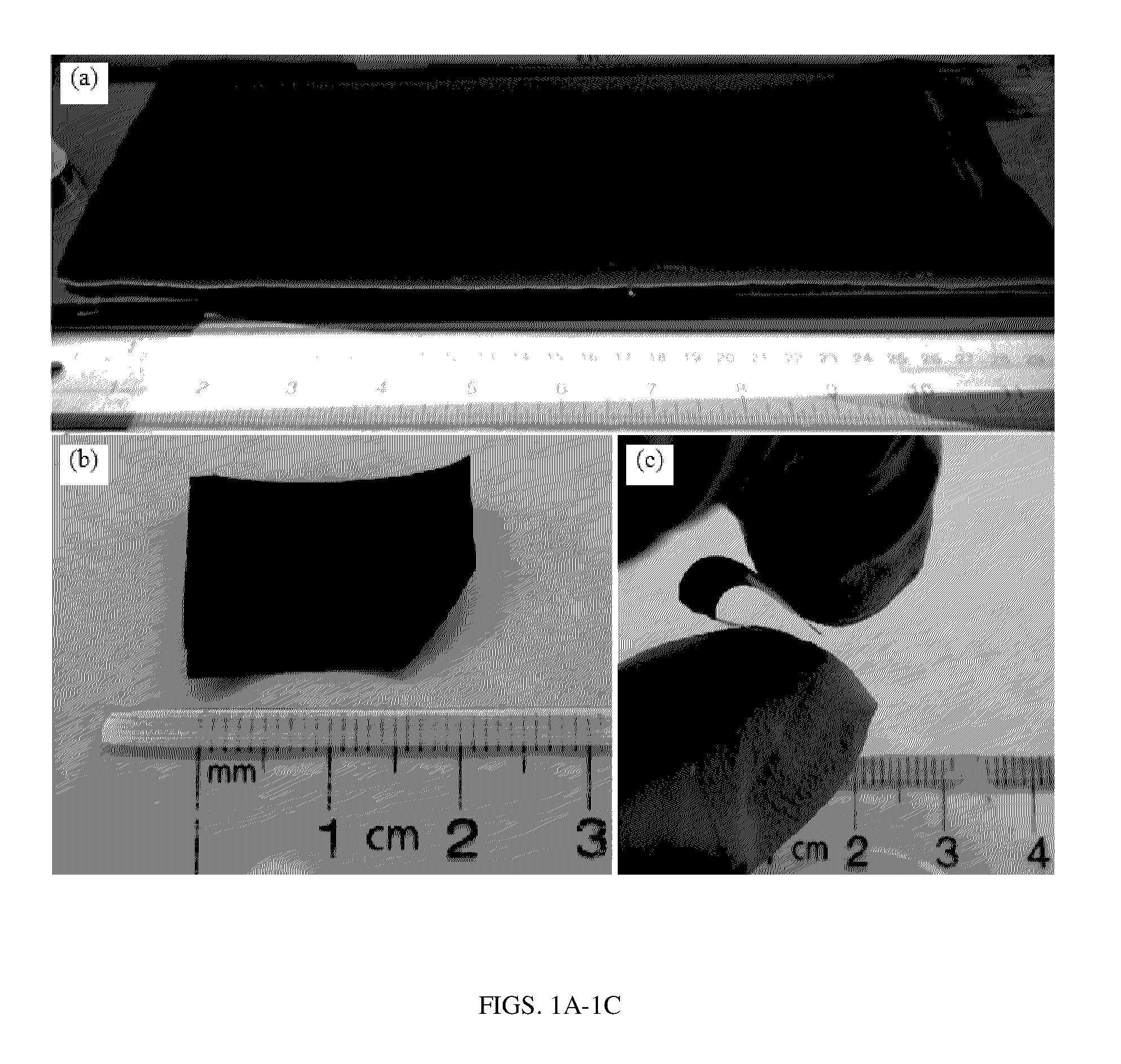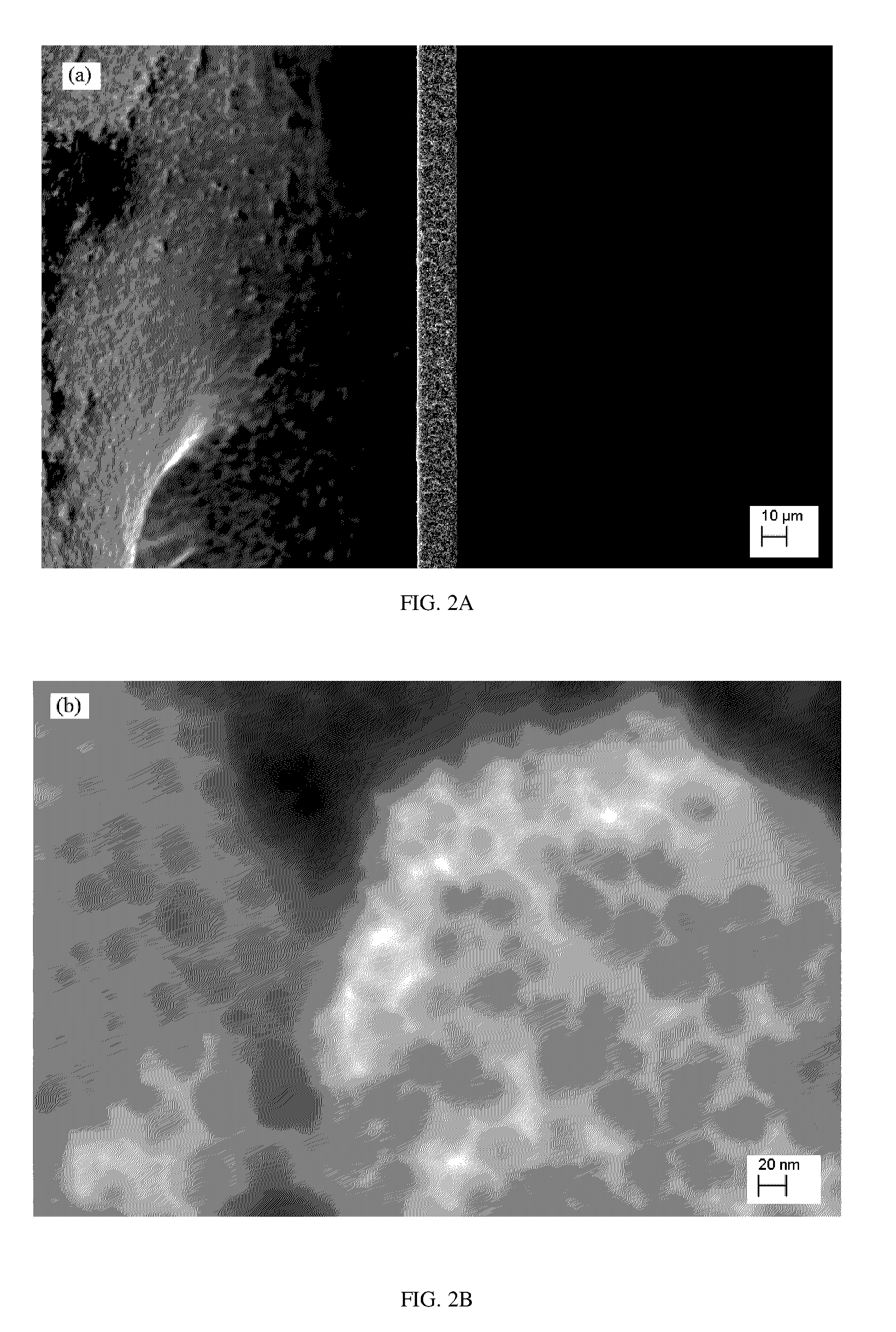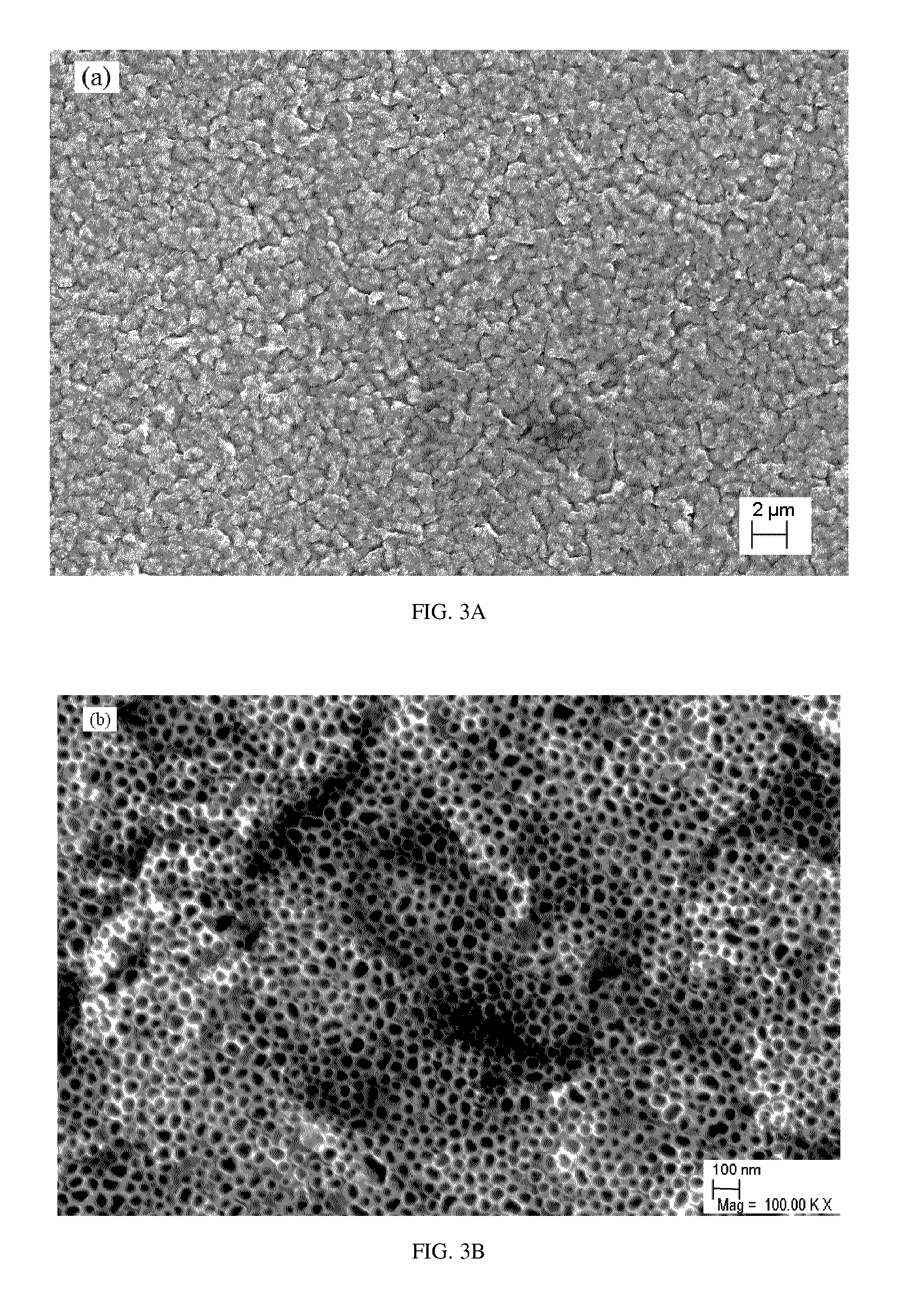Porous carbon films
a technology of porous carbon and carbon dioxide, which is applied in the field of porous carbon dioxide, can solve the problems of limiting the application of carbon dioxide powder, increasing the problem of particulates, and affecting the health of the population
- Summary
- Abstract
- Description
- Claims
- Application Information
AI Technical Summary
Benefits of technology
Problems solved by technology
Method used
Image
Examples
example
1. Introduction
[0061]In the work described in this example, a scalable method was developed to prepare self-supporting nanoporous carbon films (NCFs), based on colloid imprinted carbons (CICS) and involving the following steps: 1) casting an aqueous precursor mixture that includes carbon precursor(s), surfactant(s), silica-based structure templates, binder(s), plasticizer(s), and additives, on a substrate, 2) drying the mixture to form a film, 3) heat-treating (carbonizing) the film, and then 4) removing the silica template. Tape-casting is the preferred method to prepare these films, as it is applicable for manufacturing at a large scale [7, 16, 17]. The thickness of the films can be controlled (e.g. from 100 nm to 1 mm) by changing the concentration of the aqueous precursor mixture or adjusting the gap between the doctor blade and the substrate during tape-casting. The pore size of the films in this example was controlled by using silica nanoparticles with different diameters as t...
PUM
| Property | Measurement | Unit |
|---|---|---|
| size | aaaaa | aaaaa |
| temperature | aaaaa | aaaaa |
| temperature | aaaaa | aaaaa |
Abstract
Description
Claims
Application Information
 Login to View More
Login to View More - R&D
- Intellectual Property
- Life Sciences
- Materials
- Tech Scout
- Unparalleled Data Quality
- Higher Quality Content
- 60% Fewer Hallucinations
Browse by: Latest US Patents, China's latest patents, Technical Efficacy Thesaurus, Application Domain, Technology Topic, Popular Technical Reports.
© 2025 PatSnap. All rights reserved.Legal|Privacy policy|Modern Slavery Act Transparency Statement|Sitemap|About US| Contact US: help@patsnap.com



